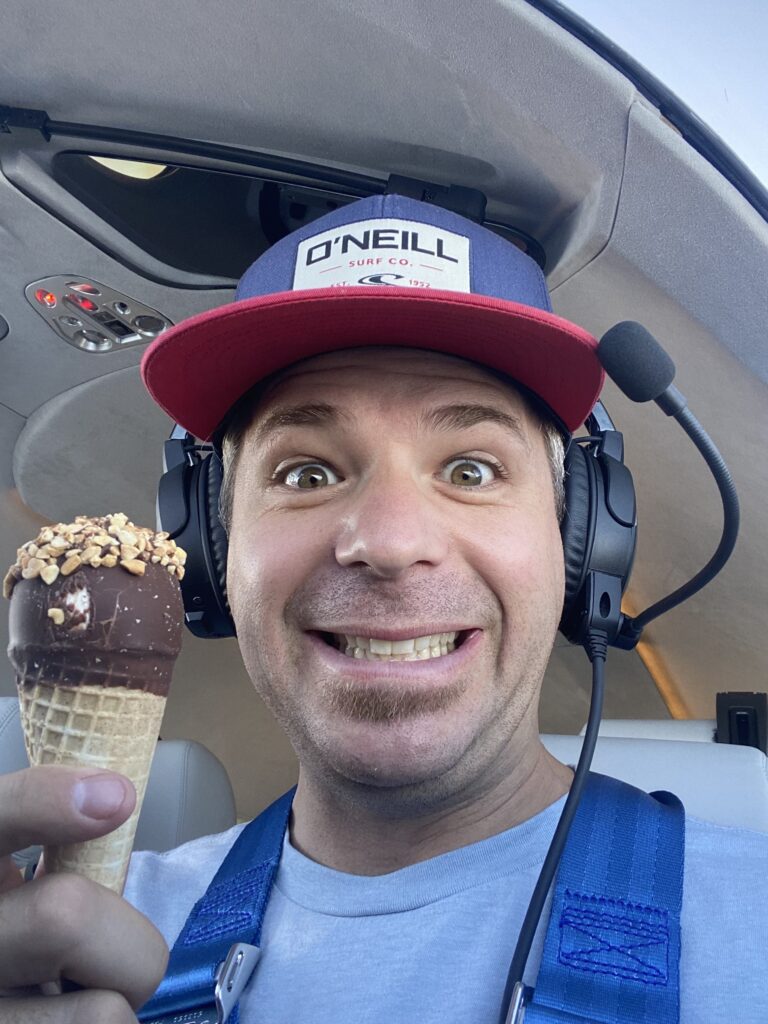
Instrument Rating Course
Head in the Clouds
Boost your weather confidence, lower your insurance premiums, and experience the joys of cloud surfing.
Instrument Flying
On instruments, flying is only half the job. By aviating, navigating, communicating, planning, and briefing without outside visual reference, instrument pilots are rewarded with the view of a runway emerging from the cloud bases—and with the confidence that they can stay safe, even when they can’t see outside.
An instrument rating reduces insurance premiums, polishes us as aviators, and introduces the procedural world where most professional pilots operate.
Our Training Philosophy
Instrument flying is busy and complex, and demands situational awareness. We prioritize building pilots’ instrument flying mental models to emphasize aircraft control, situational awareness, contingency planning, and decision-making.
Here’s what’s in your course.
Simple, Effective Lectures
Concise online lectures that use a virtual blackboard style to help you grasp complex aviation concepts.
Full access to our resources library.
Access to our extensive resource library, featuring over 40 visual handouts, more than 200 review questions, and comprehensive study guides.
Knowledge Test
Graduates are endorsed for the FAA Instrument Rating Airplane Knowledge Test.
Expert Instructors
Learn from real-world IFR pilots in the airlines and corporate world.
Progress Tracking
Easily monitor your course progression.
Hands-On Practice
Apply theory through real-world scenarios and practice exercises.
Mobile Learning
Study on the go with our iOS App.
Flexible Schedule
Customize your study pace to fit your schedule.
Peer Support
Join classroom groups for collaborative learning.
Messaging System
Ask your instructors questions through our built-in messaging system.
Resource Library
Access an extensive library of custom-made learning resources.
FAA References
Fortify your knowledge with official FAA references.
Lifetime Updates
We routinely improve and update course material.
Cancel Anytime
Cancel your subscription at any time.
Course Overview
Learning Objectives
- Understand how to translate VFR stick-and-rudder skills to the instrument environment
- Improve weather proficiency to include knowing when it’s not safe, even with an instrument rating
- Competence in IFR planning and decision making
- Understanding the general structure of the instrument environment, including regulations
- Proficiency in IFR procedures including ground operations, takeoff, departures, en-route, arrivals, and approaches
Time Commitment
Dedicate 30-40 hours of study in total. 5 hours per week, for 8 weeks total is a good pace.
Quizzes & Exams
Test your knowledge with 10 review quizzes and 2 comprehensive end of course exams.
Graduation
Once you score 90% or better on at least two end of course exams, you’ll be issued a graduation certificate and written test endorsement!
Instructor
Andrew Moon
Andrew is an experienced Certificated Flight Instructor — Instrument (CFII) and Airline Transport Pilot (ATP) and spends lots of time in challenging weather flying a variety of light singles, twins, and jets.
Bio
Instrument Course
Get ready to ace the Instrument Rating Airplane (IRA) FAA written exam, while you develop a real-world IFR mindset! With this course you’ll have access to:
- Hours of blackboard lecture videos
- The entire resources directory
- A comprehensive end of course study guide
- Study with classmates in our IFR Classroom!
- Understand the differences between IFR “in theory” and IFR in the real world!
- The ability to direct message your instructors
- An instructor team with lots of real-world IFR experience in everything from a steam gauge Cessna 152 to a Boeing 737.
Frequently Asked Questions
-
What is an instrument rating?
An instrument rating is a qualification added to a Private or Commercial certificate that allows the pilot to act as PIC under instrument flight rules (IFR). It enables pilots to navigate and fly in adverse weather conditions, using only their instruments and without visual reference to the ground.
-
What are the prerequisites for this course?
There are no course prerequisites, but earning an instrument rating requires meeting the eligibility requirements in 14 CFR §61.65 which includes at least a Private Pilot certificate and (with exceptions) 50 hours of cross-country time.
-
What are the benefits of earning an instrument rating?
Earning an instrument rating offers several advantages, including increased safety, reduced insurance premiums, and refined piloting skills. Approached wisely, it’s a valuable addition to a pilot’s skill set.
-
What written test will this course prepare me for?
This course prepares students for the FAA Instrument Rating Airplane (IRA) written test.
-
How long does the course take to complete?
The exact timeframe will vary by student, but plan for 40-50 hours between watching lectures, making flashcards, and studying the content.
-
Do I need to complete the course in a specific timeframe?
Nope, one major advantage of IFR online ground school is the freedom to study at your own pace!
-
Does having an instrument rating mean it’s safe to fly in all weather conditions?
No, and it’s very important to recognize this. A significant part of instrument training involves learning when it is safe to fly and when it is not. Our IFR ground school focuses on developing the skills to navigate in adverse weather while recognizing the importance of making informed decisions about when to fly based on specific conditions and their individual capabilities.


